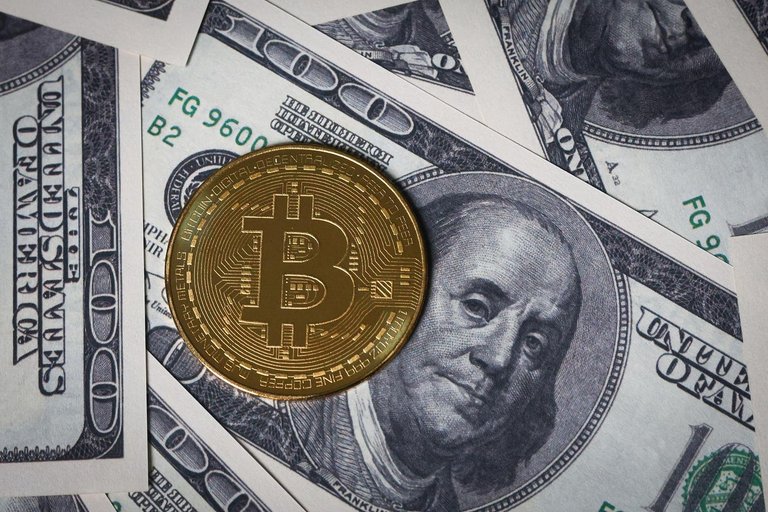U.S. Bitcoin Reserve Strategy Sparks Debate Over Gold Sales and Alternative Approaches

As the United States grapples with its Bitcoin reserve strategy, Jiang Jinze, analyst and founder of Muse Labs, has raised concerns about the government’s approach. While direct Bitcoin purchases have been ruled out, Jiang highlights that selling gold to indirectly fund Bitcoin acquisitions is now being considered as a viable alternative.
✔ Budget-Neutral Approach – Unlike new fiscal expenditures, gold sales would not require additional funds, making it a politically and economically feasible option.
✔ Shifting Reserves – This strategy would involve reallocating existing assets rather than increasing national debt or disrupting monetary policy.
Jiang’s comments come amid growing discussions about how the U.S. should structure its Bitcoin reserves, with other experts weighing in on whether gold should be liquidated to bolster crypto holdings.
U.S. Bitcoin Holdings: Reality vs. Perception
In a detailed analysis, Jiang questioned the reliability of the U.S. government’s current Bitcoin reserves, particularly the assumption that seized BTC is a sustainable long-term asset.
✔ Misconception About Reserve Size – While former Trump crypto advisor David Sacks claims the U.S. government holds 200,000 BTC, Jiang argues that only 100,000 BTC is genuinely available for reserves.
✔ Bitfinex Hack Repayments – Nearly half of the U.S.’s confiscated Bitcoin must be returned to Bitfinex, following the recovery of funds stolen in a 2016 exchange hack.
✔ Future Seizures Are Uncertain – Many of the remaining confiscated BTC were seized at much lower market prices, and relying on future criminal forfeitures for Bitcoin accumulation may not be a sustainable strategy.
Jiang’s critique aligns with frustration from crypto advocates, who point out that the Biden administration previously sold off 195,000 BTC for just $366 million—a fraction of its potential value today, estimated at over $17 billion.

Alternative Strategies to Expand U.S. Bitcoin Reserves
To address the limitations of relying solely on seized Bitcoin, Jiang outlined three alternative approaches for expanding national BTC holdings without requiring additional federal spending:
1. Asset Reallocation: Selling Gold & Other Reserves
✔ Gold Sales as the Primary Solution – Jiang argues that liquidating a portion of the U.S.’s gold reserves is the most practical way to fund Bitcoin purchases.
✔ Other Assets – While assets like government-owned land, buildings, and licenses could be sold, their overall market value is too limited to make a meaningful impact.
2. Reinvesting Tariff Revenues
✔ Redirecting tariff income could provide a steady funding stream for Bitcoin acquisitions.
✖ However, this approach is unlikely in the short term, as Commerce Secretary Gina Raimondo has already ruled out using tariff-generated funds for a national Bitcoin reserve.
3. Utilizing Federal Resources for Bitcoin Mining
✔ The U.S. could repurpose underutilized energy sources and government data centers for Bitcoin mining.
✔ The model is inspired by Bhutan’s state-backed Bitcoin mining operations.
✖ However, with 95% of all Bitcoin already mined, this approach would likely have limited impact on reserves.
Matrixport’s Bitcoin Reserve Proposal & Potential Market Impact
Leading crypto financial services firm Matrixport has also proposed that the U.S. fund Bitcoin reserves through gold sales.
✔ Senator Cynthia Lummis’ BITCOIN Act – The proposed legislation suggests leveraging gold’s $688 billion market value to acquire 1 million BTC over five years.
✔ Selling 15% of gold reserves – This could generate $110 billion, enough to purchase 1.05 million BTC at current prices.
However, Matrixport cautions that such a large-scale Bitcoin purchase could create market distortions, driving up prices and making future accumulation increasingly expensive.
White House Crypto Summit: The Future of U.S. Bitcoin Policy
The White House Crypto Summit is expected to play a key role in shaping U.S. crypto policy over the next four years.
✔ Regulatory Clarity – The administration is likely to simplify crypto regulations while maintaining opposition to central bank digital currencies (CBDCs).
✔ U.S. Blockchain Leadership – The summit will explore ways to position the U.S. as a global blockchain leader.
However, the government’s current Bitcoin reserve strategy has disappointed many crypto investors.
✔ Spencer Hakimian, founder of Tolou Capital Management, called the plan underwhelming, arguing that it lacks the aggressive Bitcoin accumulation approach some had expected.
✔ Trump’s Pro-Crypto Narrative – Some industry leaders believed Trump’s campaign suggested a more proactive Bitcoin investment strategy, but the current approach appears more focused on managing existing holdings rather than expanding reserves.

Conclusion: The U.S. Bitcoin Reserve Debate Continues
As the U.S. evaluates its Bitcoin strategy, the idea of selling gold to fund BTC reserves is gaining traction among analysts and policymakers.
✔ While the White House remains cautious, industry voices like Jiang Jinze and Matrixport highlight the potential of alternative reserve strategies.
✔ As Bitcoin adoption grows and institutional interest increases, the U.S.’s approach to digital asset reserves will likely remain a highly debated issue in financial and policy circles.